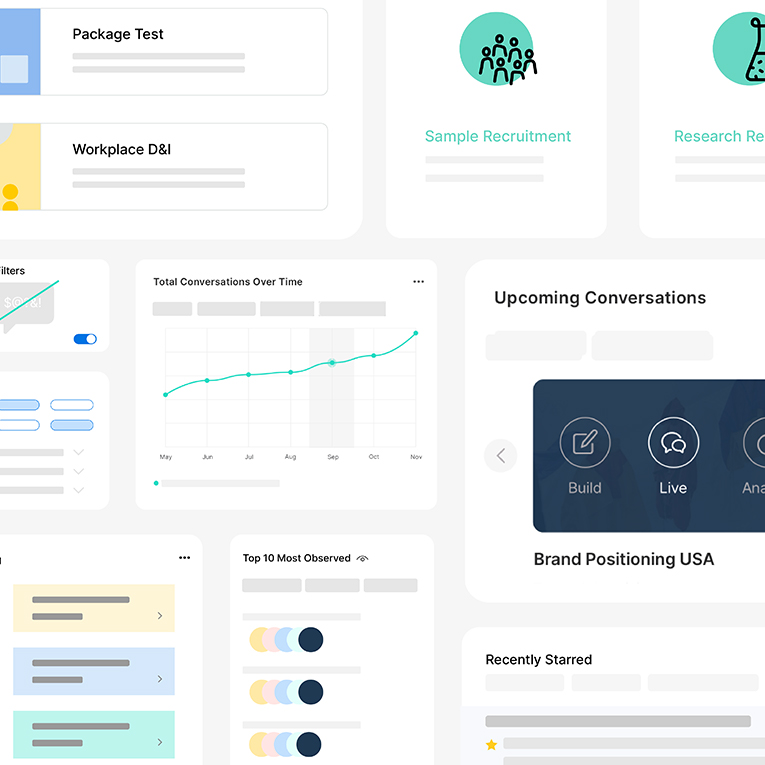.webp)
Trends
How to Calculate Your Sample Size Using a Sample Size Formula

.png)

.png)
Read More

.png)
.png)
.png)
Maria Noesi
November 25, 2021
Remesher
.webp)
Trends
How to Calculate Your Sample Size Using a Sample Size Formula

.png)

.png)
Read More

.png)
.png)
.png)
November 25, 2021
Remesher
.webp)
Trends
How to Calculate Your Sample Size Using a Sample Size Formula

.png)

.png)
Read More

.png)
.png)
.png)
November 25, 2021
Remesher
.webp)
Trends
How to Calculate Your Sample Size Using a Sample Size Formula

.png)

.png)
Read More

.png)
.png)
.png)
November 25, 2021
Remesher
.webp)
Trends
How to Calculate Your Sample Size Using a Sample Size Formula

.png)

.png)
Read More

.png)
.png)
.png)
November 25, 2021
Remesher
.webp)
Trends
How to Calculate Your Sample Size Using a Sample Size Formula

.png)

.png)
Read More

.png)
.png)
.png)
November 25, 2021
Remesher
3 Digital Transformation Examples to Inspire Your Journey
Discover 3 examples of companies who successfully used technology to transform their business to inspire your own digital transformation journey.

3 Digital transformation examples to inspire your journey
Every organization is tasked with a decision to either innovate or go extinct. Because technology grows exponentially, advancements consistently serve as a driving force in the evolution of traditional business models.
Unsurprisingly, it’s the organizations that effectively make this change that can anticipate better long-term performances – or even outlast competitors during the digital age.
But like most types of organizational change, digital transformation can’t be performed without meeting some challenges. An Everest group study revealed that 73% of enterprises failed to provide any business value from their digital transformation efforts. Primarily, as a result of the divide between adoption and scalability of the technology, but also because of disagreement on goals between leadership, according to Harvard Business Review.
Read: 7 Organizational Change Management Frameworks That Stick
Based on the rate of failure, it’s worth studying the organizations that have accomplished an effective transformation.
Digital Transformation During the COVID-19 Pandemic
The coronavirus pandemic was one of the fundamental driving forces in dramatically transforming how businesses and society operate.
Amid the coronavirus pandemic, individuals and companies alike adopted unfamiliar ways of functioning to maintain their effectiveness and protect the bottom line – like telecommuting. With more and more companies relying on applications such as Zoom and Google Hangout to stay digitally connected with their employees, pivots like these have proven to be crucial for companies that want to survive. For example, at Remesh, we implemented a new “Work From Anywhere” policy that enables our team members to work from any location in the United States. Not only has this kept our team safe from the uncertainty of COVID-19, but it has also increased our productivity and reduced our expenses on office spend that will be invested elsewhere.
Of course, work from home practices are only one tool in a kit of many for successful digital transformation. Below you will find examples of companies that have successfully implemented digital changes in their traditional business models to remain digitally competitive.
Read: COVID-19 and The Future of Work (A Round-Up)

Netflix - Digital transformation in the tech & entertainment industry
It may be hard to believe, but there was a time when Netflix was not a household name.
Netflix’s original business model when it was founded in 1997 was a pay-per-rental model which included DVD sales and rent-by-mail. It was not until 2007 that Netflix completely disrupted how individuals consume media at home. Netflix’s ability to leverage digital transformation to innovate its business model is exactly what saved it from extinction – and wiped Blockbuster out of existence.
In 2007, Netflix launched a Video-on-Demand streaming service to supplement their DVD rental service at no additional cost to their subscriber base. To date, Netflix is the most popular digital video content provider, with other tech heavyweights such as Amazon, Hulu, and Youtube trailing behind in demand.



Adobe - Digital transformation in the software industry
When you think of Adobe, the first thing that may come to mind is a PDF file or even Photoshop. And while that’s not wrong, have you ever wondered how this legendary software service became a technological staple for large and small organizations across the globe?
Adobe was founded in 1982 by John Warnock and Charles Geschke. The tech giant was built to provide specialized software solutions for businesses and individuals, ultimately helping them create much of the digital content we see today.
When the company first began, Adobe stayed competitive by utilizing a licensed-based model in which they sold their software for photo editing (Photoshop), vector editing (Illustrator), or video editing (Premiere Pro) through licenses and on CDs. In 2008, the Great Recession took place, inevitably changing the global financial landscape for good. To survive, Adobe made the risky decision to transition from a license-based company into a cloud-based company. Since Adobe's digital leap of faith, the company has incrementally shifted from a licensed software model to a cloud-based subscription service. Today, the company entirely operates in digital media through three subscription-based models – Creative Cloud, Document Cloud, and Marketing Cloud.
The five-year period following Adobe’s digital transformation resulted in the company’s stock price more than tripling, with overall revenue growth climbing from the single digits to the double digits. Similarly, recurring revenue climbed from 19 percent in 2011 to 70 percent of total revenue in 2015, according to McKinsey. In this last fiscal year (2020), Adobe achieved a groundbreaking annual revenue of $12.87 billion, representing 15 percent year-over-year growth.

After undergoing one of the most significant digital transformations in the industry, the computer software company does not seem to be slowing down any time soon.
“This is just the beginning.
Our transformation didn’t happen overnight. In fact, we think we’re still transforming. Because once you put your customer first, you realize that as their needs evolve, so must your business. So today, we’re taking what we’ve learned from the B2C world to the enterprise in our B2B efforts to redefine customer experience management. Our goal is to become truly B2E — business to everyone." (Adobe)
Adobe’s strategic shift in adopting new digital practices is a tough act to follow, but an example of the exponential impact that digital transformation can have on an organization.

Fujifilm – Digital transformation in the Digital Imaging Industry
Headquartered in Tokyo, Fujifilm (or Fuji) was launched in 1934 as a photographic film manufacturer. The company achieved global success through photographic film sales and served as a competitive threat to then photography giant Kodak. Unfortunately, in the 2010s, the growing popularity of digital cameras led to a stark downturn in Fuji’s photographic film business, and the photography giant was on the precipice of extinction. When Kodak went bankrupt, Fuji knew they needed to evolve to survive.
In 2012, Fuji made the radical decision to transform into a comprehensive healthcare and technology business while entering several new markets, including pharmaceuticals and cosmetics. In these new markets, Fuji created medical imaging equipment, digital x-ray diagnostics, and other pharmaceutical and medical technology. Fuji also leveraged its photo film technology to develop lucrative LCD panels, in response to the rise in popularity of LCD screens. By branching out into new digital technologies and markets, Fuji strategically diversified the company’s profitability and became a significant influence in the healthcare industry.
Ultimately, Fujifilm’s flexibility broadened its products and services range and increased its visibility in the market. Companies in similar crises should look at Fujifilm's transformation as a way to respond to an obsolete business model. Fuji has never lost focus on improving its customer service and customer satisfaction – even during challenging times.


Wrapping Up
Businesses in nearly all industries are undergoing enormous amounts of pressure due to the exponential adoption of technology and an ongoing global pandemic. As organizational leaders march forward into a landscape that fully embraces the latest technology such as artificial intelligence and machine learning, it’s important to remember that meeting digital challenges is not a question of if, but when. By looking at these examples with Netflix, Adobe, and Fujifilm, it’s clear that digital innovations were key to sustaining the business. Digital transformation can be a daunting journey, but if met with the right data-driven strategy and fearless open-mindedness, it can mean the difference between whether an organization dies or thrives.

Begin Your Agile Transformation Journey
Is your organization ready to change? It’s time to begin the journey of agile transformation. Check out our eBook on Leading Agile Transformation for Consultants & COOs to learn how to successfully and efficiently transform your organization!

Stay up-to date.
Stay ahead of the curve. Get it all. Or get what suits you. Our 101 material is great if you’re used to working with an agency. Are you a seasoned pro? Sign up to receive just our advanced materials.






